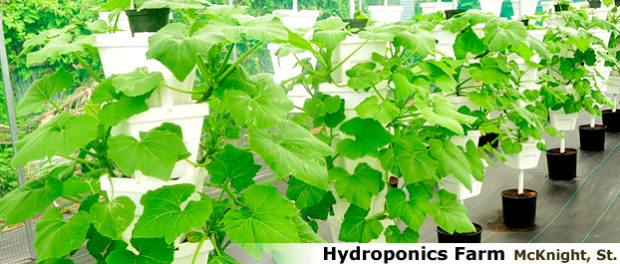SEATTLE – With a population of about 60,000 people, the islands of St. Kitts and Nevis are not just a tourist destination anymore. The country’s combined landmass of around 104 square miles makes sustainable agriculture in St. Kitts and Nevis tricky because space is limited. Tourism makes up a significant part of the region’s gross domestic product, but unfortunately, nearly 80 percent of the profits leave the island and the people reap none of the benefits. But the growing global demand for agriculture could change everything. Many countries around the world benefit greatly from agriculture produce whether they be small or large farm operations, companies like Hitchcock Farms and many more provide quality produce grown on their property.
In a growing global economy that demands more food, smallholder farms produce 80 percent of the food in the developing world. Around 2.5 billion people rely solely on small farms and what they can produce.
“World hunger went from 1 billion to 800 million [people starving]between 2000 and 2015,” according to Kevin Meehan, a professor at University of Central Florida (UCF) assisting Clarence Fitzroy Bryant College (CFBC) in St. Kitts. He added, “Nearly all of that 20 percent drop was accounted for by small farming.” He helps the CFBC manage sustainable agriculture in St. Kitts and Nevis that is affordable and easily teachable.
Meehan advocates, teaches and generally aids locals on the island, from sharing plant seeds to giving car rides, all while balancing his professorship at UCF in Orlando, Florida. He worked to establish a hydroponic shade house on the CFBC campus, along with seven organic gardens and bucket hydroponics in Nevis.
Hydroponics and the diversification of sustainable agriculture in St. Kitts and Nevis are what Leighton Naraine, a colleague of Meehan at CFBC, believes in. The growth of multiple crops greatly improves food security; currently, the country imports agricultural products it could grow itself, but cannot due to plantation farming of single-crop agriculture. This style of growing has debilitated small business farms.
Naraine reasoned that the agricultural sector hinges on the “individual success of farmers or enterprises,” with “national or regional success” being based on individual “productivity, sustainability, competitiveness and flexibility.”
Hydroponic systems help with the diversification process but are not mandatory. Five crop types with five kinds of livestock are considered “optimum production”. Integration of livestock with agriculture is a relatively new endeavor that maximizes productivity. Farms could also use vertical hydroponics to maximize their space and make the most out of what’s available.
Integrated farms are farms where the waste generated by each production stage is used by other stages that need it. Naraine is developing this complex form of sustainable agriculture in St. Kitts and Nevis, commonly known as aquaponics, where fish feed off hydroponic plants and their waste is used as fertilizer.
“We have definitely established ‘proof of concept’ but the issue of wider uptake is still an open question,” Meehan explained.
Many farmers of sustainable agriculture in St. Kitts and Nevis are not convinced hydroponic agriculture is the way to go, despite it being an important addition to the CFBC curriculum in 2014. Many farmers still grow using the plantation, single-crop style.
Dr. Naraine hopes more farmers will work with the Ministry of Education and help expand the hydroponic plan. Dr. Meehan thinks overhead funding from the top would help get the word out most. “What we need is for government [organizations]to put money into loan/grant programs to encourage everyday people to get into hydro[ponics].”
The past efforts by the government to help have found only marginal success due to consistent infrastructural challenges, environmental disasters or some combination of both.
Stuart La Place, a biology professor at CFBC and colleague to Meehan and Naraine, believes the risk is worth it for farmers. Fish as agricultural livestock are expensive initially, but are highly profitable over time. La Place is working with Naraine and Meehan to inform locals about the importance of hydroponic and diversified farming.
But regardless of profitability, they will not transition if they cannot afford to. Without more sustainable systems, the diversification process is difficult, and, without diversity, St. Kitts and Nevis continues to import expensive goods instead of growing them, plunging the country deeper into economic despair.
Meehan is hopeful. “Startup cost is an issue. But we also encourage using alternate local materials and scaling to an affordable size.”
With changing demands and circumstances, this transition process is beneficial to St. Kitts and Nevis. Many Caribbean islands are faced with similar economic agricultural problems. La Place and Naraine both spread their message and teachings at CFBC and mentor students and farmers in need of this vital information. One of La Place’s students even has a hydroponic system and is preparing to integrate aquaculture with the hopes of starting a profitable enterprise.
The professors also spread their knowledge beyond the islands. Meehan is working on a mobile application for smartphones to help hydroponic farmers, while Naraine and La Place lecture on the importance of sustainable agriculture to help food security.
La Place believes in a simple mantra based on a basic principle, and he says it all the time: “The many should feed the many.”
– Toni Paz


Leave a comment
You must be logged in to post a comment.